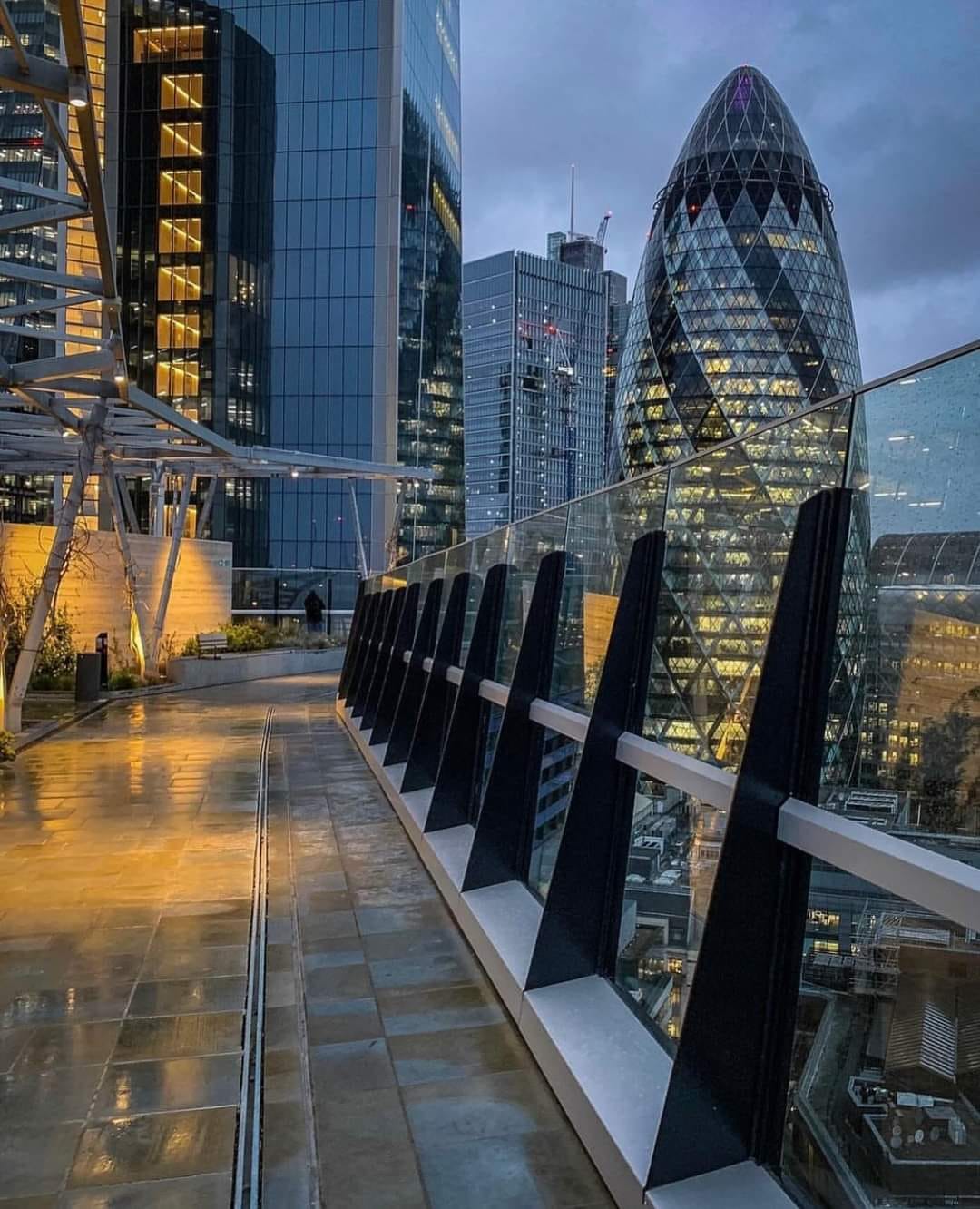Events
| Name | organizer | Where |
|---|---|---|
| MBCC “Doing Business with Mongolia seminar and Christmas Receptiom” Dec 10. 2024 London UK | MBCCI | London UK Goodman LLC |
NEWS
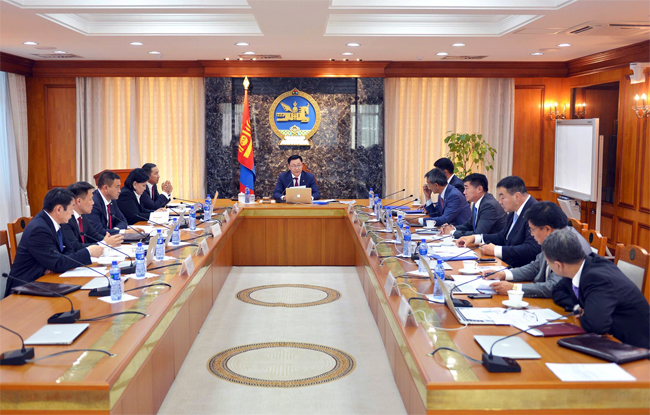
Government Discusses Amendments to State Budget at Its First Session www.montsame.mn
The newly formed Government held its first session on June 18, 2025, discussing the draft amendments to the state budget to reduce inefficient state spending.
To do that first of all, it plans to make civil service rationally structured, compact, and competent. Changes will be made to improve functions and structure, ensure a reasonable ratio of management and executive personnel, and reduce the number of civil servants, except for teachers and doctors, by nine percent. It is estimated that a total of MNT1.9 trillion will be saved in the framework of saving the bearable costs of state institutions, continuing the programs being implemented in an austerity mode, completely saving the costs of programs that have not started yet, and creating a compact, competent, and productive e-government.
In parallel with the reduction of civil service staff, the quality of public services that reach citizens will not be degraded by continuing the digitalization of government services, introducing innovations to improve productivity conforming with the characteristics of each sector. The draft amendment reflects to reduction of the number of first deputy heads and deputy heads of state institutions. Moreover, savings will be made by suspending business trips abroad and receiving foreign guests other than high-level foreign visits, as well as buying furniture and routine maintenance of all levels of state institutions, and reducing expenses for transportation and fuel of state institutions other than military institutions, and internal business trips.
Second, according to the Law on State Savings, the procurement process should be completed by May 31, 2025, and projects without contracts will not be funded, and the savings resulting from tender procurement will be saved. However, the financing and implementation of projects with contracts in line with relevant laws and within the framework of the state budget investment plan will not be affected. Consequently, a total of MNT 328.2 billion is estimated to be saved.
As for foreign loans and aid, a total of MNT 1.9 trillion, including foreign loans of MNT 1.5 trillion and aid of MNT 417.0 billion, is approved to be used in 2025 and the budget amendments will not change the funding. This year high amount of funding from foreign loans and aid will be allocated for development projects such as the construction of an oil refinery, the Erdeneburen Hydropower Plant, and the Millennium Challenge Corporation's project to increase water supply in Ulaanbaatar.
Third, the laws that lead to the increase of budget expenditures will be streamlined. The budget amendment will not reduce mandatory financing expenses aligning with laws and regulations, including pensions and benefits provided by the Social Insurance and Welfare funds, child allowance, spending for medicines and medical equipment, student lunches at all levels of educational institutions, Government loan service payments, as well as salaries of civil servants and one-time retirement benefits, and benefits for stable employment in rural areas, stated the Minister of Finance.
Currently, 1028 provisions of 208 laws out of a total of 932 laws in force in Mongolia increase budget expenditures in some way and make it impossible to save through amendments. Therefore, the relevant draft laws have been developed, taking into account the urgent need to repeal or amend some laws to reduce current budget expenditures and strengthen discipline and accountability.
In addition, as the Government designated 2026 as the “Year to Support Education” and in line with its policy of promoting the construction of new kindergartens and general education schools, increasing accessibility, attracting private sector investment, and investing in education, a draft law has been developed that reflects the construction of new kindergartens and secondary and high school buildings regardless of the form of ownership, will be subject to the tax deduction specified in Article 22.9 of the Law on Corporate Income Tax.
By amending the 2025 budget, the balanced revenue of the consolidated budget is estimated to be MNT31.2 trillion, reduced by MNT2.3 trillion, while the total expenditure of the consolidated budget to be MNT31.2 trillion, reduced by MNT2.3 trillion, making the state budget balanced and deficit-free.
Prime Minister Zandanshatar Gombojav instructed the Ministers to familiarize themselves with their sectoral budgets. and that an irregular Cabinet session is announced to be on Friday, June 20, 2025, to discuss the draft amendments to the state budget again.
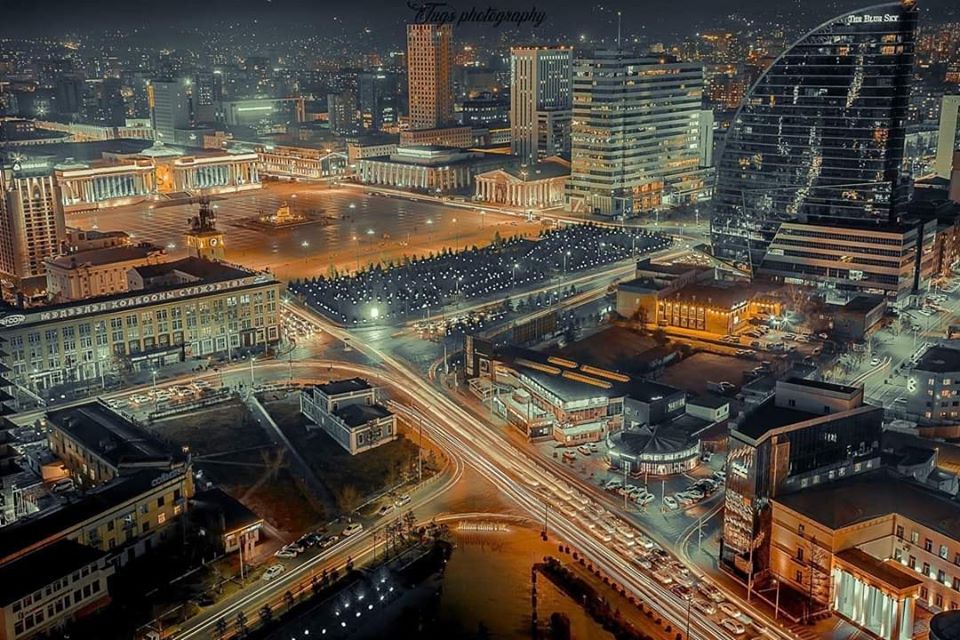
Cross-Platform Integration in Asian Gadgets www.tradeflock.com
Device manufacturers across Asia are racing to improve how users switch between platforms. Laptops, phones, smart TVs, and wearable tech now connect in ways that reduce effort and save time. This development helps both users and companies streamline daily tasks and digital interactions.
In Mongolia, gadget owners increasingly expect their tools to work together. Phones synchronize with TVs, smartwatches send alerts to desktops, and cloud access spans multiple devices. As digital habits change, platforms that support seamless usage across screens gain loyalty. The process of bizbet registration, for example, highlights how services benefit from cross-device flows when built for mobile and desktop simultaneously.
This article breaks down how cross-platform technology affects Asian users, what systems are in place, and how Mongolia fits into this evolution.
Core Benefits of Cross-Platform Integration
Cross-platform integration helps users avoid repeat actions. Once logged in on one device, the same session may continue on another. Many systems also store user preferences in the cloud, so the same interface loads across multiple screens.
In Asia, popular integration examples include Samsung’s Galaxy ecosystem, Apple’s iCloud tools, and Huawei’s Super Device platform. These allow users to drag files between devices, answer calls from tablets, or open app sessions on laptops. Mongolia is gradually adopting such models, especially in Ulaanbaatar, where tech use is dense.
Users now expect one-time logins, mirrored apps, and real-time syncs. Tech services that support identity management across platforms see higher engagement due to ease of access and consistent data flow.
Mongolia’s Adoption of Multi-Device Habits
Mongolia shows strong signs of cross-platform readiness. Urban users own smartphones, smart TVs, and laptops. Many already use cloud storage and synchronize their data across devices. Mobile-first services dominate, but the switch between phone and desktop is frequent.
Offices in Mongolia also benefit from integrated systems. Workers often start documents on mobile and finish edits on PC. Apps used for video calls, finance, and even gaming all support session transfers. The case of registration shows how users prefer one login that works on app and web versions alike.
Educational institutions use platforms like Microsoft Teams and Google Workspace, which link smartphones, laptops, and tablets. Integration helps students access learning materials from home or school, even in areas with limited bandwidth.
Technology Driving Integration
Several tools support smooth cross-platform function. These include cloud APIs, Bluetooth connectivity, local network syncs, and fingerprint or facial ID services. Users move from phone to desktop in seconds without extra login steps or data transfer delays.
Below are the main technologies supporting cross-platform use:
Cloud sync: Stores data centrally and updates it across all signed-in devices.
Bluetooth pairing: Links gadgets for file transfers or audio streaming.
Companion apps: Offer extended functions – for instance, using a phone as a remote for TV.
QR logins: Allow fast entry to websites via mobile scanning.
Single sign-on (SSO): Lets users access multiple tools with one secure login.
In Mongolia, these tools are widely used in urban areas. Local internet providers also offer support for Wi-Fi mesh systems, which further improve connection between devices at home or office.
Challenges and Local Variations in Mongolia
Cross-platform growth in Mongolia still faces challenges. Regional disparities in internet speed and device affordability limit usage outside city zones. Some users rely on older gadgets that lack the latest synchronizing features or OS support.
Still, most tech brands selling in Mongolia provide affordable entry-level models that support basic integration. Android phones under $200 now include cloud backup and casting support. Smart TVs allow screen mirroring from phones, while basic laptops can use cloud services to stay in sync.
Language also affects integration. While most operating systems now offer Mongolian-language menus, not all apps follow this standard. Users with limited English sometimes struggle to follow cross-platform settings or updates.
Outlook for Cross-Platform Gadgets in Mongolia
Integration will continue shaping how Mongolians interact with technology. Future growth depends on affordable devices, improved internet, and localisation. As users expect all tools to work together, services that support fast syncs and easy access will gain traction.
Tech brands and service providers have an opportunity to build long-term loyalty. If platforms offer smooth login, app continuity, and multi-screen support, users will return. Betting tools and entertainment apps that support seamless movement between devices will benefit the most.
Mongolia’s digital future is linked to how well local services adapt to this model. With rising smartphone ownership and cloud use, integrated gadgets will play a bigger role in daily life. Whether for work, leisure, or otherplatforms, users now demand unified access.
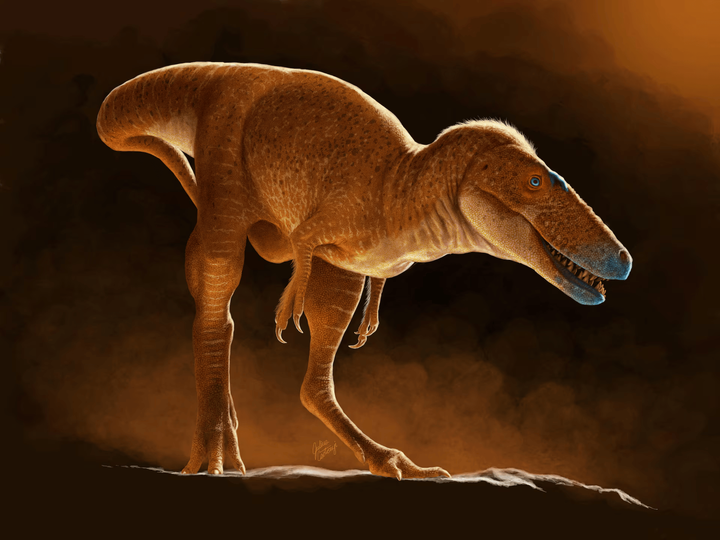
Mongolia’s ‘Dragon Prince’ Dinosaur Was Forerunner of Tyrannosaurus Rex www.reuters.com
A newly identified mid-sized dinosaur from Mongolia dubbed the “Dragon Prince” has been identified as a pivotal forerunner of Tyrannosaurus rex in an illuminating discovery that has helped clarify the famous predator’s complicated family history.
Named Khankhuuluu mongoliensis (pronounced khan-KOO-loo mon-gol-ee-EN-sis), it lived roughly 86 million years ago during the Cretaceous Period and was an immediate precursor to the dinosaur lineage called tyrannosaurs, which included some of the largest meat-eating land animals in Earth’s history, among them T. rex. Khankhuuluu predated Tyrannosaurus by about 20 million years.
It was about 4 meters long, weighed about 750 kilograms, walked on two legs and had a lengthy snout with a mouthful of sharp teeth. More lightly built than T. rex, its body proportions indicate Khankhuuluu was fleet-footed, likely chasing down smaller prey such as bird-like dinosaurs called oviraptorosaurs and ornithomimosaurs. The largest known T. rex specimen is 12.3 meters long.
Khankhuuluu means “Dragon Prince” in the Mongolian language. Tyrannosaurus rex means “tyrant king of the lizards.”
“In the name, we wanted to capture that Khankhuuluu was a small, early form that had not evolved into a king. It was still a prince,” said paleontologist Darla Zelenitsky of the University of Calgary in Canada, coauthor of the study published on June 11 in the journal Nature.
Tyrannosaurs and all other meat-eating dinosaurs are part of a group called theropods. Tyrannosaurs appeared late in the age of dinosaurs, roaming Asia and North America.
Khankhuuluu shared many anatomical traits with tyrannosaurs but lacked certain defining characteristics, showing it was a predecessor and not a true member of the lineage.
“Khankhuuluu was almost a tyrannosaur, but not quite. For example, the bone along the top of the snout and the bones around the eye are somewhat different from what we see in tyrannosaurs. The snout bone was hollow and the bones around the eye didn’t have all the horns and bumps seen in tyrannosaurs,” Zelenitsky said.
“Khankhuuluu had teeth like steak knives, with serrations along both the front and back edges. Large tyrannosaurs had conical teeth and massive jaws that allowed them to bite with extreme force, then hold, in order to subdue very large prey. Khankhuuluu’s more slender teeth and jaws show this animal took slashing bites to take down smaller prey,” Zelenitsky added.
The researchers figured out its anatomy based on fossils of two Khankhuuluu individuals dug up in the 1970s but only now fully studied. These included parts of its skull, arms, legs, tail and back bones.
The Khankhuuluu remains, more complete than fossils of other known tyrannosaur forerunners, helped the researchers untangle this lineage’s evolutionary history. They concluded that Khankhuuluu was the link between smaller forerunners of tyrannosaurs and later true tyrannosaurs, a transitional animal that reveals how these meat-eaters evolved from speedy and modestly sized species into giant apex predators.
“What started as the discovery of a new species ended up with us rewriting the family history of tyrannosaurs,” said University of Calgary doctoral student and study lead author Jared Voris. “Before this, there was a lot of confusion about who was related to who when it came to tyrannosaur species.”
Some scientists had hypothesized that smaller tyrannosaurs like China’s Qianzhousaurus — dubbed “Pinnochio-rexes” because of their characteristic long snouts — reflected the lineage’s ancestral form. That notion was contradicted by the fact that tyrannosaur forerunner Khankhuuluu differed from them in important ways.
“The tyrannosaur family didn’t follow a straightforward path where they evolved from small size in early species to larger and larger sizes in later species,” Zelenitsky said.
Voris noted that Khankhuuluu demonstrates that the ancestors to the tyrannosaurs lived in Asia.
“Around 85 million years ago, these tyrannosaur ancestors crossed a land bridge connecting Siberia and Alaska and evolved in North America into the apex predatory tyrannosaurs,” Voris said.
One line of North American tyrannosaurs later trekked back to Asia and split into two branches — the “Pinnochio-rexes” and massive forms like Tarbosaurus, the researchers said. These apex predators then spread back to North America, they said, paving the way for the appearance of T. rex. Tyrannosaurus ruled western North America at the end of the age of dinosaurs when an asteroid struck Earth 66 million years ago.
“Khankhuuluu was where it all started, but it was still only a distant ancestor of T. rex, at nearly 20 million years older,” Zelenitsky said. “Over a dozen tyrannosaur species evolved in the time between them. It was a great-great-great uncle, sort of.”

16 killed in water-related accidents in Mongolia so far this year www.xinhuanet.com
Sixteen people have been killed in water-related accidents across Mongolia since the beginning of 2025, the country's National Emergency Management Agency (NEMA) said Wednesday.
Among the dead people, 12 were adults and four were children, said a statement from the NEMA.
As of Wednesday, the water levels in Mongolia's major rivers, including the Selenge, Orkhon, Chuluut and Tuul, have exceeded the warning levels by 5-15 cm due to heavy rains in some parts of Mongolia, the NEMA said, urging people to stay away from flooded rivers to prevent possible accidents.
In 2024, a total of 77 people, including 14 children, were killed in water-related accidents in the country, according to the agency.
...
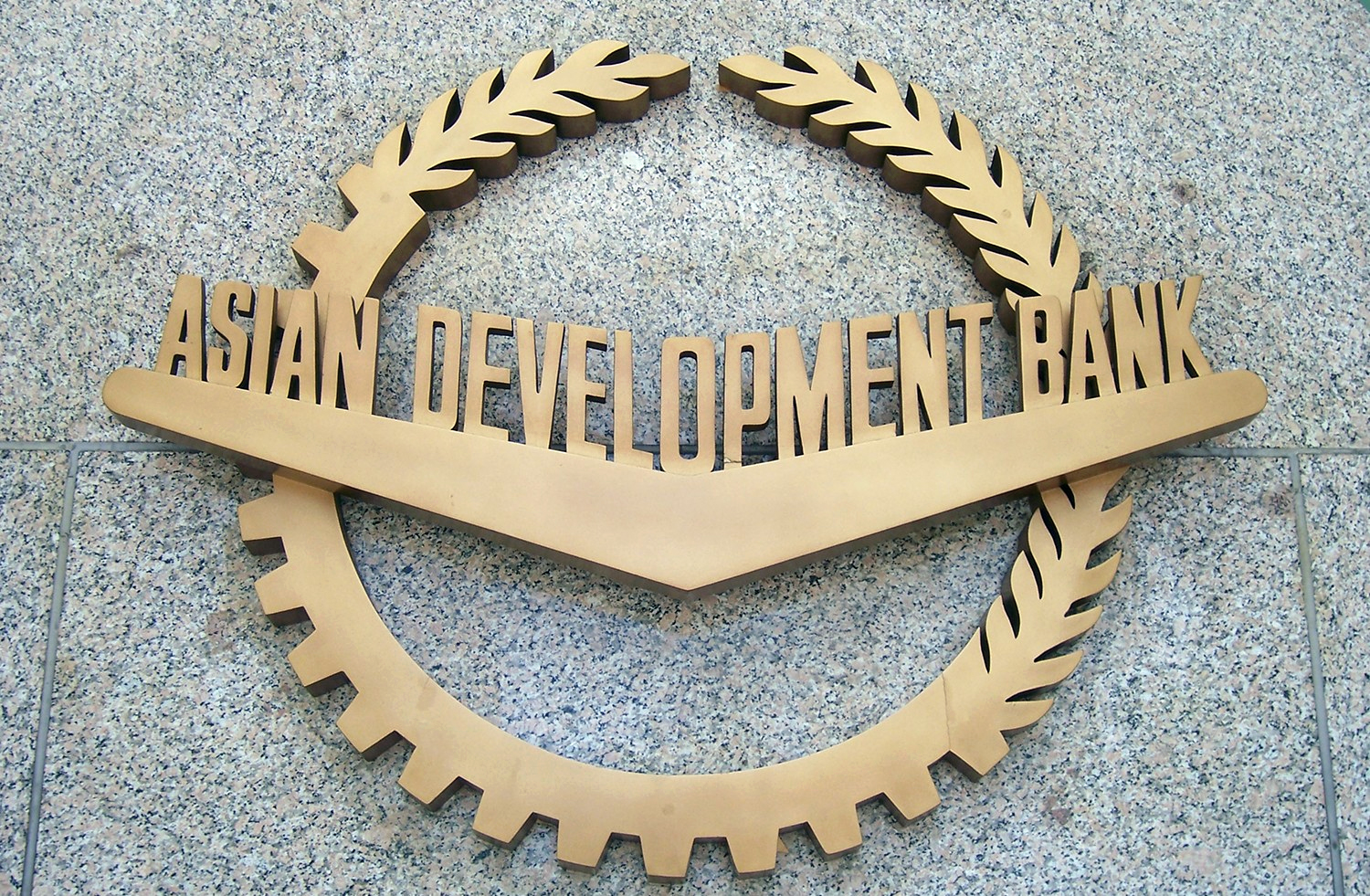
ADB launches 2nd Mongolian togrog bond in 2025 www.xinhuanet.com
The Asian Development Bank (ADB) said Wednesday that it has priced its second Mongolian togrog (MNT) bond for the year, raising 55.8 billion togrog (approximately 15.6 million U.S. dollars) to support a dairy project in Mongolia.
In a statement, the ADB said the 6.1-year MNT-denominated bond carries a fixed coupon rate of 10.30 percent. The bond carries the largest notional amount and longest tenor for an MNT bond issued by ADB since its inaugural nomad bond issued in 2020.
"Bond proceeds will finance the construction of a new factory building, expansion of dairy processing and packaging capacity, establishment of raw milk collection centers, and working capital needs of APU Dairy Inclusive Value Chain Development Project," the ADB statement read.
It added that the project will support sustainable dairy supply from local resources and enable more women to participate in Mongolia's dairy supply chain production.
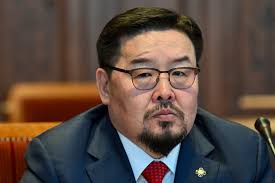
G.Zandanshatar: One-third of previous government retained to continue mega projects www.gogo.mn
On June 17, the plenary session of the Parliament commenced, during which Prime Minister G.Zandanshatar introduced the structure of his new government.
He stated, “In order to ensure the continuity of ongoing mega projects, one-third of the previous government has been retained. The principle of including representatives from parties with seats in Parliament has also been observed in forming the new cabinet”.
Newly appointed Ministers:
N. Uchral – First Deputy Prime Minister and Minister of Economy and Development
S. Amarsaikhan – Deputy Prime Minister
T. Dorjkhand – Deputy Prime Minister
S. Byambatsogt – Head of the Cabinet Secretariat
B. Battsetseg – Minister of Foreign Affairs
B. Javkhlan – Minister of Finance
L. Munkhbaatar – Minister of Justice and Internal Affairs
G. Damdinnyam – Minister of Industry and Mineral Resources
D. Batlut – Minister of Defense
B. Batbaatar – Minister of Environment and Climate Change
P. Naranbayar – Minister of Education
T. Aubakir – Minister of Family, Labor and Social Protection
B. Delgersaikhan – Minister of Road Transport Development
Ch. Undram – Minister of Culture, Sports, Tourism and Youth
E. Bat-Amgalan – Minister of Urban Development, Construction and Housing
J. Enkhbayar – Minister of Food, Agriculture, and Light Industry
E. Batshugar – Minister of Digital Development, Innovation and Communications
B. Choijilsuren – Minister of Energy
J. Chinburen – Minister of Health

EBRD lending up to MNT 26.2 billion to support Mongolia’s automotive sector www.ebrd.com
The European Bank for Reconstruction and Development (EBRD) is promoting further growth in non-extractive industries in Mongolia by supporting the operations of its longstanding client MSM Group, which is involved in the production and sale of industrial chemicals, the distribution and maintenance of cars and industrial vehicles, and the importing and distribution of beverages.
MSM, which has been working with the EBRD since 2008, will use the Bank’s loan of up to MNT 26.2 billion (€7 million) for the construction of a storage facility, a workshop and an automotive showroom. The funds will also help MSM to finance its working capital needs.
The expansion of MSM’s operations will help it to provide a better and faster service to its customers. The company will also be in a better position to cater for the needs of Mongolia’s rapidly growing automotive sector, which saw a 67 per cent increase in vehicle imports in 2024.
The EBRD has invested almost €2.77 billion in Mongolia’s economy through 158 projects to date. Approximately 90 per cent of these funds have been used to support private-sector companies.
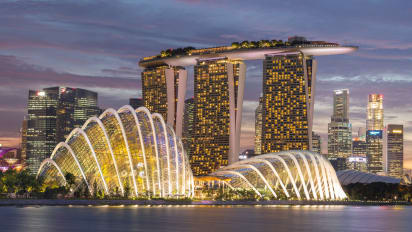
New trade avenues open with Singapore www.ubpost.mn
In celebration of the 55th anniversary of diplomatic relations between Mongolia and Singapore, the two nations have reaffirmed their commitment to deepening economic and commercial ties through a high-level business forum held in Ulaanbaatar. The Mongolia-Singapore Business Relations, Connections and Cooperation Meeting brought together government officials, business leaders and entrepreneurs to explore new avenues for trade, investment and long-term partnership.
The forum featured participation from approximately 20 entrepreneurs representing eight Singaporean companies engaged in logistics, software development, language training, chemical engineering and industrial process development. Their Mongolian counterparts, more than 10 entrepreneurs from related fields, engaged in one-on-one B2B discussions, paving the way for direct collaboration and investment opportunities.
Opening the event, CEO of the Mongolian National Chamber of Commerce and Industry (MNCCI) B.Saruul highlighted Singapore’s global leadership in smart development, financial innovation and technology. “This meeting is not just a milestone in our diplomatic journey, but a meaningful step toward building sustainable, value-driven business networks that will foster innovation and mutual prosperity,” she said.
In a keynote address, Director of the Institute of Economic Research at the MNCCI O.Tumen-Amar spoke on “Challenges and Opportunities for Foreign Enterprises Entering Mongolia”. He emphasized the country’s growing market potential and strategic sectors for investment. Despite the modest trade volume, bilateral trade is showing promise. In 2024, Singapore exported 10.4 million USD worth of goods to Mongolia and imported 45 million USD, accounting for 0.2 percent of the country’s total trade turnover.
The two countries currently collaborate across several sectors, including mining, education and services, with growing emphasis on human resource development and capacity-building for civil servants. There are around 30 companies with Singaporean investment operating in Mongolia, particularly in trade, catering, geology, mining, banking and finance.
The event was jointly organized by the MNCCI, the Embassy of Mongolia in Singapore, the Singapore Business Association, and Enterprise Singapore, a government agency supporting Singaporean enterprises in overseas expansion. The meeting concluded with optimism about future economic cooperation, as both countries continue to build a modern and strategic partnership grounded in innovation and mutual growth.
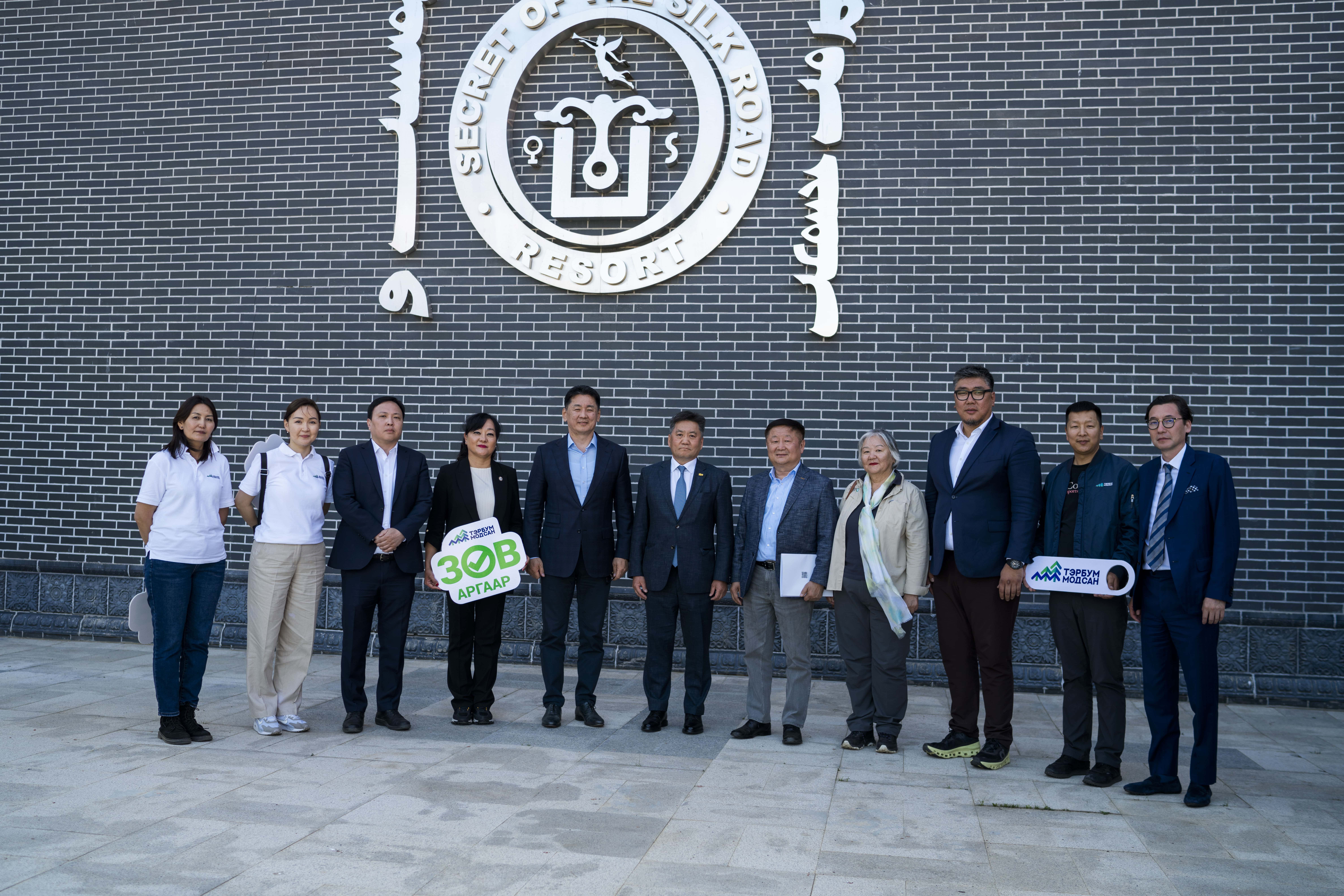
The Mongolian Billion Tree Foundation has made a contribution to the “The Great Khaans’ Garden” www.billiontree.mn
The reconstruction of the ancient city Kharkhorin in Uvurkhangai province has officially begun with the inauguration of The Great Khaan’s Garden.
President of Mongolia Khurelsukh Ukhnaa has foremly inagurated “The Great Khaans’ Garden” along with other high -level officials. Following the oppening speeches, the national flag of Mongolia was raised in the center of the garden, symbolizing the eternal prosperity of our ancestral land and cultural heritage, a significant state ceremony in its own right.
In this way, what was once a city existing only on paper is now beginning to materialize as a “well-planned green city” from the very outset.
As part of its contribution, the Mongolian Billion Tree Fund has planted a total of 3,616 coniferous trees in the The Great Khaans’ Garden, laying the foundation for the future Kharkhorum. Among these 500 are fir trees, with the remainder being pine. Additionally, a 13,000 square meter parking area, with lighting, has been constructed and handed over for public use. The afforestation work was implemented by “Tod Gazar” LLC, while the parking lot was built by “Central AZZA TJSC” for Road Maintenance, both completing the work within a short time frame and at a high level of quality.
Mongolian Billion Tree Foundation will be responsible for the irrigation, care, and protection of the planted trees over the next three years.
This contribution by the fund to the development of Kharkhorum aligns with national efforts to combat climate change and desertification, supporting key environmental policies and meaningful initiatives in every possible way.
The city under reconstruction will have 50% of its total area covered by forest, 30% for construction, and the remaining for roads.

China-Mongolia Border Railway Begins Piling www.ceic.com
On June 15th, CHN Energy's Baoshen Railway Gants Mod Railway Company and Mongolia's Tavantolgoi Railway LLC simultaneously commenced drilling operations at the border, marking the start of the first pile for Pier 24 of the China-Mongolia Cross-border Railway Bridge.
The Chinese section of this cross-border railway bridge spans 760 meters and includes 348 bored piles, 34 pile caps and 34 piers.
The project connects China's Gants Mod Port with Mongolia's Gashuun Sukhait Port. Upon completion, it will link the Ganquan Railway with Mongolia's southbound railway network. This represents the second cross-border railway between China and Mongolia since the 1950s, playing a significant role in enhancing regional connectivity and economic and trade cooperation.
Currently, both Chinese and Mongolian sides are working in close cooperation to advance construction and ensure the project is completed on schedule. The railway is expected to facilitate the expansion of energy and resource trade between the two countries and spur the development of cross-border logistics, industrial parks and related sectors.
- «
- 1
- 2
- 3
- 4
- 5
- 6
- 7
- 8
- 9
- 10
- 11
- 12
- 13
- 14
- 15
- 16
- 17
- 18
- 19
- 20
- 21
- 22
- 23
- 24
- 25
- 26
- 27
- 28
- 29
- 30
- 31
- 32
- 33
- 34
- 35
- 36
- 37
- 38
- 39
- 40
- 41
- 42
- 43
- 44
- 45
- 46
- 47
- 48
- 49
- 50
- 51
- 52
- 53
- 54
- 55
- 56
- 57
- 58
- 59
- 60
- 61
- 62
- 63
- 64
- 65
- 66
- 67
- 68
- 69
- 70
- 71
- 72
- 73
- 74
- 75
- 76
- 77
- 78
- 79
- 80
- 81
- 82
- 83
- 84
- 85
- 86
- 87
- 88
- 89
- 90
- 91
- 92
- 93
- 94
- 95
- 96
- 97
- 98
- 99
- 100
- 101
- 102
- 103
- 104
- 105
- 106
- 107
- 108
- 109
- 110
- 111
- 112
- 113
- 114
- 115
- 116
- 117
- 118
- 119
- 120
- 121
- 122
- 123
- 124
- 125
- 126
- 127
- 128
- 129
- 130
- 131
- 132
- 133
- 134
- 135
- 136
- 137
- 138
- 139
- 140
- 141
- 142
- 143
- 144
- 145
- 146
- 147
- 148
- 149
- 150
- 151
- 152
- 153
- 154
- 155
- 156
- 157
- 158
- 159
- 160
- 161
- 162
- 163
- 164
- 165
- 166
- 167
- 168
- 169
- 170
- 171
- 172
- 173
- 174
- 175
- 176
- 177
- 178
- 179
- 180
- 181
- 182
- 183
- 184
- 185
- 186
- 187
- 188
- 189
- 190
- 191
- 192
- 193
- 194
- 195
- 196
- 197
- 198
- 199
- 200
- 201
- 202
- 203
- 204
- 205
- 206
- 207
- 208
- 209
- 210
- 211
- 212
- 213
- 214
- 215
- 216
- 217
- 218
- 219
- 220
- 221
- 222
- 223
- 224
- 225
- 226
- 227
- 228
- 229
- 230
- 231
- 232
- 233
- 234
- 235
- 236
- 237
- 238
- 239
- 240
- 241
- 242
- 243
- 244
- 245
- 246
- 247
- 248
- 249
- 250
- 251
- 252
- 253
- 254
- 255
- 256
- 257
- 258
- 259
- 260
- 261
- 262
- 263
- 264
- 265
- 266
- 267
- 268
- 269
- 270
- 271
- 272
- 273
- 274
- 275
- 276
- 277
- 278
- 279
- 280
- 281
- 282
- 283
- 284
- 285
- 286
- 287
- 288
- 289
- 290
- 291
- 292
- 293
- 294
- 295
- 296
- 297
- 298
- 299
- 300
- 301
- 302
- 303
- 304
- 305
- 306
- 307
- 308
- 309
- 310
- 311
- 312
- 313
- 314
- 315
- 316
- 317
- 318
- 319
- 320
- 321
- 322
- 323
- 324
- 325
- 326
- 327
- 328
- 329
- 330
- 331
- 332
- 333
- 334
- 335
- 336
- 337
- 338
- 339
- 340
- 341
- 342
- 343
- 344
- 345
- 346
- 347
- 348
- 349
- 350
- 351
- 352
- 353
- 354
- 355
- 356
- 357
- 358
- 359
- 360
- 361
- 362
- 363
- 364
- 365
- 366
- 367
- 368
- 369
- 370
- 371
- 372
- 373
- 374
- 375
- 376
- 377
- 378
- 379
- 380
- 381
- 382
- 383
- 384
- 385
- 386
- 387
- 388
- 389
- 390
- 391
- 392
- 393
- 394
- 395
- 396
- 397
- 398
- 399
- 400
- 401
- 402
- 403
- 404
- 405
- 406
- 407
- 408
- 409
- 410
- 411
- 412
- 413
- 414
- 415
- 416
- 417
- 418
- 419
- 420
- 421
- 422
- 423
- 424
- 425
- 426
- 427
- 428
- 429
- 430
- 431
- 432
- 433
- 434
- 435
- 436
- 437
- 438
- 439
- 440
- 441
- 442
- 443
- 444
- 445
- 446
- 447
- 448
- 449
- 450
- 451
- 452
- 453
- 454
- 455
- 456
- 457
- 458
- 459
- 460
- 461
- 462
- 463
- 464
- 465
- 466
- 467
- 468
- 469
- 470
- 471
- 472
- 473
- 474
- 475
- 476
- 477
- 478
- 479
- 480
- 481
- 482
- 483
- 484
- 485
- 486
- 487
- 488
- 489
- 490
- 491
- 492
- 493
- 494
- 495
- 496
- 497
- 498
- 499
- 500
- 501
- 502
- 503
- 504
- 505
- 506
- 507
- 508
- 509
- 510
- 511
- 512
- 513
- 514
- 515
- 516
- 517
- 518
- 519
- 520
- 521
- 522
- 523
- 524
- 525
- 526
- 527
- 528
- 529
- 530
- 531
- 532
- 533
- 534
- 535
- 536
- 537
- 538
- 539
- 540
- 541
- 542
- 543
- 544
- 545
- 546
- 547
- 548
- 549
- 550
- 551
- 552
- 553
- 554
- 555
- 556
- 557
- 558
- 559
- 560
- 561
- 562
- 563
- 564
- 565
- 566
- 567
- 568
- 569
- 570
- 571
- 572
- 573
- 574
- 575
- 576
- 577
- 578
- 579
- 580
- 581
- 582
- 583
- 584
- 585
- 586
- 587
- 588
- 589
- 590
- 591
- 592
- 593
- 594
- 595
- 596
- 597
- 598
- 599
- 600
- 601
- 602
- 603
- 604
- 605
- 606
- 607
- 608
- 609
- 610
- 611
- 612
- 613
- 614
- 615
- 616
- 617
- 618
- 619
- 620
- 621
- 622
- 623
- 624
- 625
- 626
- 627
- 628
- 629
- 630
- 631
- 632
- 633
- 634
- 635
- 636
- 637
- 638
- 639
- 640
- 641
- 642
- 643
- 644
- 645
- 646
- 647
- 648
- 649
- 650
- 651
- 652
- 653
- 654
- 655
- 656
- 657
- 658
- 659
- 660
- 661
- 662
- 663
- 664
- 665
- 666
- 667
- 668
- 669
- 670
- 671
- 672
- 673
- 674
- 675
- 676
- 677
- 678
- 679
- 680
- 681
- 682
- 683
- 684
- 685
- 686
- 687
- 688
- 689
- 690
- 691
- 692
- 693
- 694
- 695
- 696
- 697
- 698
- 699
- 700
- 701
- 702
- 703
- 704
- 705
- 706
- 707
- 708
- 709
- 710
- 711
- 712
- 713
- 714
- 715
- 716
- 717
- 718
- 719
- 720
- 721
- 722
- 723
- 724
- 725
- 726
- 727
- 728
- 729
- 730
- 731
- 732
- 733
- 734
- 735
- 736
- 737
- 738
- 739
- 740
- 741
- 742
- 743
- 744
- 745
- 746
- 747
- 748
- 749
- 750
- 751
- 752
- 753
- 754
- 755
- 756
- 757
- 758
- 759
- 760
- 761
- 762
- 763
- 764
- 765
- 766
- 767
- 768
- 769
- 770
- 771
- 772
- 773
- 774
- 775
- 776
- 777
- 778
- 779
- 780
- 781
- 782
- 783
- 784
- 785
- 786
- 787
- 788
- 789
- 790
- 791
- 792
- 793
- 794
- 795
- 796
- 797
- 798
- 799
- 800
- 801
- 802
- 803
- 804
- 805
- 806
- 807
- 808
- 809
- 810
- 811
- 812
- 813
- 814
- 815
- 816
- 817
- 818
- 819
- 820
- 821
- 822
- 823
- 824
- 825
- 826
- 827
- 828
- 829
- 830
- 831
- 832
- 833
- 834
- 835
- 836
- 837
- 838
- 839
- 840
- 841
- 842
- 843
- 844
- 845
- 846
- 847
- 848
- 849
- 850
- 851
- 852
- 853
- 854
- 855
- 856
- 857
- 858
- 859
- 860
- 861
- 862
- 863
- 864
- 865
- 866
- 867
- 868
- 869
- 870
- 871
- 872
- 873
- 874
- 875
- 876
- 877
- 878
- 879
- 880
- 881
- 882
- 883
- 884
- 885
- 886
- 887
- 888
- 889
- 890
- 891
- 892
- 893
- 894
- 895
- 896
- 897
- 898
- 899
- 900
- 901
- 902
- 903
- 904
- 905
- 906
- 907
- 908
- 909
- 910
- 911
- 912
- 913
- 914
- 915
- 916
- 917
- 918
- 919
- 920
- 921
- 922
- 923
- 924
- 925
- 926
- 927
- 928
- 929
- 930
- 931
- 932
- 933
- 934
- 935
- 936
- 937
- 938
- 939
- 940
- 941
- 942
- 943
- 944
- 945
- 946
- 947
- 948
- 949
- 950
- 951
- 952
- 953
- 954
- 955
- 956
- 957
- 958
- 959
- 960
- 961
- 962
- 963
- 964
- 965
- 966
- 967
- 968
- 969
- 970
- 971
- 972
- 973
- 974
- 975
- 976
- 977
- 978
- 979
- 980
- 981
- 982
- 983
- 984
- 985
- 986
- 987
- 988
- 989
- 990
- 991
- 992
- 993
- 994
- 995
- 996
- 997
- 998
- 999
- 1000
- 1001
- 1002
- 1003
- 1004
- 1005
- 1006
- 1007
- 1008
- 1009
- 1010
- 1011
- 1012
- 1013
- 1014
- 1015
- 1016
- 1017
- 1018
- 1019
- 1020
- 1021
- 1022
- 1023
- 1024
- 1025
- 1026
- 1027
- 1028
- 1029
- 1030
- 1031
- 1032
- 1033
- 1034
- 1035
- 1036
- 1037
- 1038
- 1039
- 1040
- 1041
- 1042
- 1043
- 1044
- 1045
- 1046
- 1047
- 1048
- 1049
- 1050
- 1051
- 1052
- 1053
- 1054
- 1055
- 1056
- 1057
- 1058
- 1059
- 1060
- 1061
- 1062
- 1063
- 1064
- 1065
- 1066
- 1067
- 1068
- 1069
- 1070
- 1071
- 1072
- 1073
- 1074
- 1075
- 1076
- 1077
- 1078
- 1079
- 1080
- 1081
- 1082
- 1083
- 1084
- 1085
- 1086
- 1087
- 1088
- 1089
- 1090
- 1091
- 1092
- 1093
- 1094
- 1095
- 1096
- 1097
- 1098
- 1099
- 1100
- 1101
- 1102
- 1103
- 1104
- 1105
- 1106
- 1107
- 1108
- 1109
- 1110
- 1111
- 1112
- 1113
- 1114
- 1115
- 1116
- 1117
- 1118
- 1119
- 1120
- 1121
- 1122
- 1123
- 1124
- 1125
- 1126
- 1127
- 1128
- 1129
- 1130
- 1131
- 1132
- 1133
- 1134
- 1135
- 1136
- 1137
- 1138
- 1139
- 1140
- 1141
- 1142
- 1143
- 1144
- 1145
- 1146
- 1147
- 1148
- 1149
- 1150
- 1151
- 1152
- 1153
- 1154
- 1155
- 1156
- 1157
- 1158
- 1159
- 1160
- 1161
- 1162
- 1163
- 1164
- 1165
- 1166
- 1167
- 1168
- 1169
- 1170
- 1171
- 1172
- 1173
- 1174
- 1175
- 1176
- 1177
- 1178
- 1179
- 1180
- 1181
- 1182
- 1183
- 1184
- 1185
- 1186
- 1187
- 1188
- 1189
- 1190
- 1191
- 1192
- 1193
- 1194
- 1195
- 1196
- 1197
- 1198
- 1199
- 1200
- 1201
- 1202
- 1203
- 1204
- 1205
- 1206
- 1207
- 1208
- 1209
- 1210
- 1211
- 1212
- 1213
- 1214
- 1215
- 1216
- 1217
- 1218
- 1219
- 1220
- 1221
- 1222
- 1223
- 1224
- 1225
- 1226
- 1227
- 1228
- 1229
- 1230
- 1231
- 1232
- 1233
- 1234
- 1235
- 1236
- 1237
- 1238
- 1239
- 1240
- 1241
- 1242
- 1243
- 1244
- 1245
- 1246
- 1247
- 1248
- 1249
- 1250
- 1251
- 1252
- 1253
- 1254
- 1255
- 1256
- 1257
- 1258
- 1259
- 1260
- 1261
- 1262
- 1263
- 1264
- 1265
- 1266
- 1267
- 1268
- 1269
- 1270
- 1271
- 1272
- 1273
- 1274
- 1275
- 1276
- 1277
- 1278
- 1279
- 1280
- 1281
- 1282
- 1283
- 1284
- 1285
- 1286
- 1287
- 1288
- 1289
- 1290
- 1291
- 1292
- 1293
- 1294
- 1295
- 1296
- 1297
- 1298
- 1299
- 1300
- 1301
- 1302
- 1303
- 1304
- 1305
- 1306
- 1307
- 1308
- 1309
- 1310
- 1311
- 1312
- 1313
- 1314
- 1315
- 1316
- 1317
- 1318
- 1319
- 1320
- 1321
- 1322
- 1323
- 1324
- 1325
- 1326
- 1327
- 1328
- 1329
- 1330
- 1331
- 1332
- 1333
- 1334
- 1335
- 1336
- 1337
- 1338
- 1339
- 1340
- 1341
- 1342
- 1343
- 1344
- 1345
- 1346
- 1347
- 1348
- 1349
- 1350
- 1351
- 1352
- 1353
- 1354
- 1355
- 1356
- 1357
- 1358
- 1359
- 1360
- 1361
- 1362
- 1363
- 1364
- 1365
- 1366
- 1367
- 1368
- 1369
- 1370
- 1371
- 1372
- 1373
- 1374
- 1375
- 1376
- 1377
- 1378
- 1379
- 1380
- 1381
- 1382
- 1383
- 1384
- 1385
- 1386
- 1387
- 1388
- 1389
- 1390
- 1391
- 1392
- 1393
- 1394
- 1395
- 1396
- 1397
- 1398
- 1399
- 1400
- 1401
- 1402
- 1403
- 1404
- 1405
- 1406
- 1407
- 1408
- 1409
- 1410
- 1411
- 1412
- 1413
- 1414
- 1415
- 1416
- 1417
- 1418
- 1419
- 1420
- 1421
- 1422
- 1423
- 1424
- 1425
- 1426
- 1427
- 1428
- 1429
- 1430
- 1431
- 1432
- 1433
- 1434
- 1435
- 1436
- 1437
- 1438
- 1439
- 1440
- 1441
- 1442
- 1443
- 1444
- 1445
- 1446
- 1447
- 1448
- 1449
- 1450
- 1451
- 1452
- 1453
- 1454
- 1455
- 1456
- 1457
- 1458
- 1459
- 1460
- 1461
- 1462
- 1463
- 1464
- 1465
- 1466
- 1467
- 1468
- 1469
- 1470
- 1471
- 1472
- 1473
- 1474
- 1475
- 1476
- 1477
- 1478
- 1479
- 1480
- 1481
- 1482
- 1483
- 1484
- 1485
- 1486
- 1487
- 1488
- 1489
- 1490
- 1491
- 1492
- 1493
- 1494
- 1495
- 1496
- 1497
- 1498
- 1499
- 1500
- 1501
- 1502
- 1503
- 1504
- 1505
- 1506
- 1507
- 1508
- 1509
- 1510
- 1511
- 1512
- 1513
- 1514
- 1515
- 1516
- 1517
- 1518
- 1519
- 1520
- 1521
- 1522
- 1523
- 1524
- 1525
- 1526
- 1527
- 1528
- 1529
- 1530
- 1531
- 1532
- 1533
- 1534
- 1535
- 1536
- 1537
- 1538
- 1539
- 1540
- 1541
- 1542
- 1543
- 1544
- 1545
- 1546
- 1547
- 1548
- 1549
- 1550
- 1551
- 1552
- 1553
- 1554
- 1555
- 1556
- 1557
- 1558
- 1559
- 1560
- 1561
- 1562
- 1563
- 1564
- 1565
- 1566
- 1567
- 1568
- 1569
- 1570
- 1571
- 1572
- 1573
- 1574
- 1575
- 1576
- 1577
- 1578
- 1579
- 1580
- 1581
- 1582
- 1583
- 1584
- 1585
- 1586
- 1587
- 1588
- 1589
- 1590
- 1591
- 1592
- 1593
- 1594
- 1595
- 1596
- 1597
- 1598
- 1599
- 1600
- 1601
- 1602
- 1603
- 1604
- 1605
- 1606
- 1607
- 1608
- 1609
- 1610
- 1611
- 1612
- 1613
- 1614
- 1615
- 1616
- 1617
- 1618
- 1619
- 1620
- 1621
- 1622
- 1623
- 1624
- 1625
- 1626
- 1627
- 1628
- »

